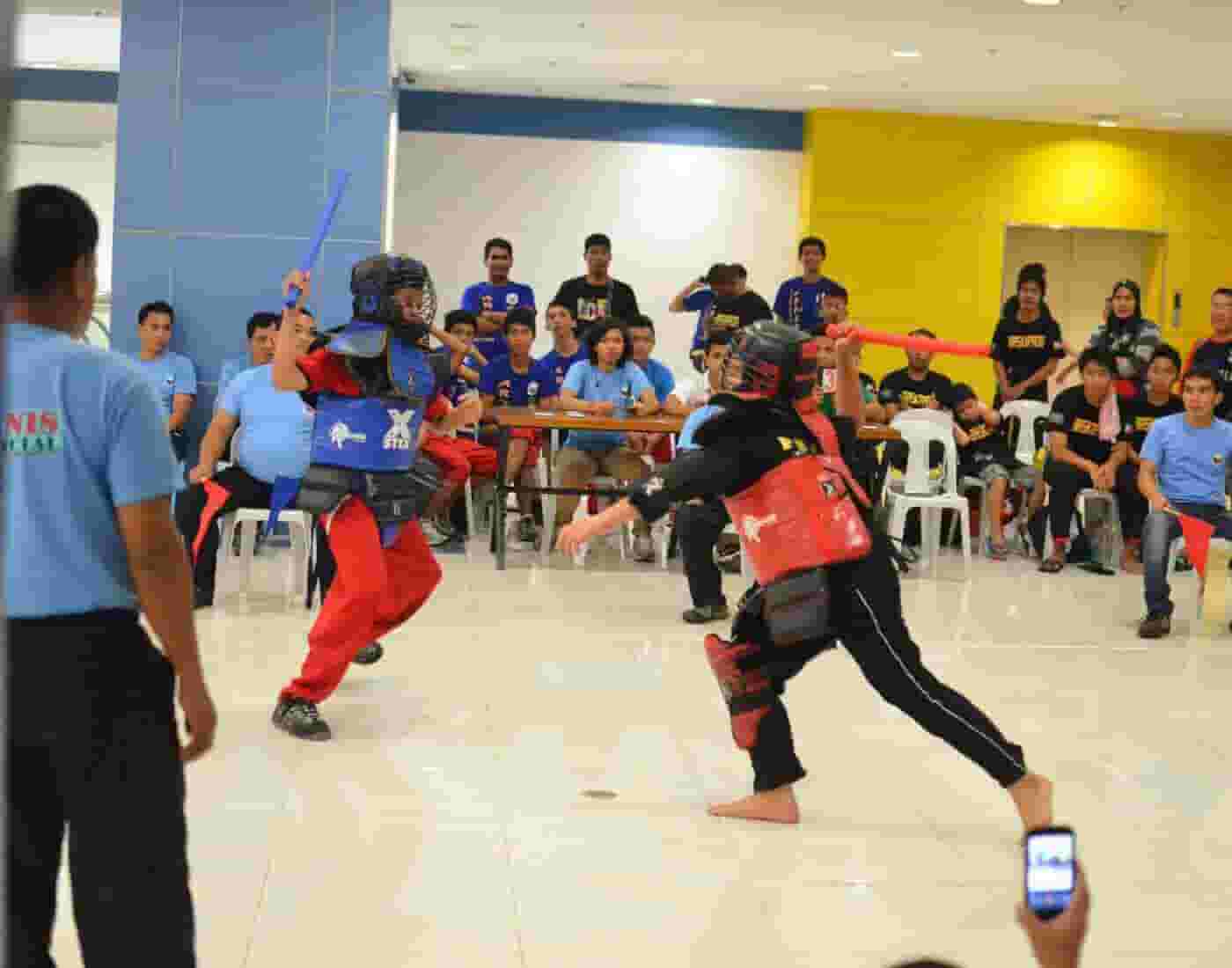Introduction
Arnis, also known as Eskrima and Kali, is a traditional martial art and sports discipline deeply rooted in the rich cultural heritage of the Philippines. With a history that dates back centuries, Arnis has evolved into a versatile and dynamic combat system. In recent years, it has gained international recognition, not only as a martial art but also as a sports activity. This article explores the fascinating world of Arnis as a sports discipline, delving into its history, techniques, and its role in modern society.
Historical Roots of Arnis
The origins of Arnis can be traced back to the Philippines, a nation made up of over 7,000 islands. This archipelago has a long history of intercultural exchange, which is reflected in the diverse influences that have shaped Arnis. Indigenous Filipino tribes had their own fighting styles, but over time, Arnis was enriched by influences from Chinese, Spanish, and other Southeast Asian martial arts.
The term “Arnis” is believed to have been derived from the Spanish word “arnés,” meaning armor. Arnis, as a martial art, was developed by Filipinos as a way to defend themselves against foreign invaders, including Spanish conquistadors. To disguise their training, Filipinos often practiced Arnis with sticks that resembled farm tools, making it difficult for the colonizers to identify it as a martial art.
Over the centuries, Arnis has evolved from being primarily a combat art to a structured and organized sport. Today, it is celebrated as a significant part of the Philippines’ cultural heritage.
Arnis as a Sport
Arnis is not just about combat; it has also become a widely practiced sport. In recent years, the Filipino government has made efforts to promote Arnis as a national sport, which has increased its popularity and led to the establishment of various organizations dedicated to its growth.
Arnis competitions follow specific rules and regulations, and practitioners participate in various events, showcasing their skills and techniques. These competitions provide a platform for individuals to test their abilities and develop a deeper understanding of the art.
Competitions typically include forms or “katas,” sparring, and weapon disarming techniques. Forms involve performing a sequence of pre-determined movements, showcasing precision, fluidity, and control. These are often choreographed and demonstrate the practitioner’s mastery of Arnis techniques. Sparring events focus on duels with protective gear, where practitioners aim to score points by making successful strikes on their opponents while adhering to safety regulations.
One of the unique aspects of Arnis is its emphasis on weapon disarming techniques. This skill is particularly significant in a country where bladed weapons have historical relevance. Competitions often include scenarios where participants must disarm an armed opponent safely, showcasing their practical self-defense skills.
Techniques and Training
Arnis is known for its wide array of techniques and its adaptability. The primary weapon in Arnis is the rattan stick, known as “baston.” Practitioners learn to use this versatile weapon for offense and defense. In addition to the baston, Arnis also includes training in knife and empty-hand techniques.
Arnis training is organized into various levels or “belt” systems, similar to other martial arts. Beginners typically start with basic strikes, blocks, and footwork. As they progress, they learn more intricate techniques and combinations, developing a deeper understanding of timing, distance, and strategy.
Practitioners also focus on the principle of “flow” or “abierta,” which involves smoothly transitioning between different techniques and responding to an opponent’s actions. This principle is essential in Arnis, as it encourages practitioners to adapt to various situations and opponents.
Sparring in Arnis is not about overpowering an opponent but rather about outsmarting them. Practitioners aim to score points by landing clean strikes while maintaining their own safety. This emphasis on control and technique makes Arnis an art that values finesse over brute force.
Safety in Arnis
Safety is a top priority in Arnis competitions and training. Practitioners wear protective gear, including helmets, gloves, and padded vests, to minimize the risk of injury. Despite the presence of weapons, Arnis is a relatively safe sport when conducted under proper supervision and with adherence to rules and safety measures.
The importance of safety extends beyond the competition arena. Instructors place a strong emphasis on responsible weapon handling, ensuring that students understand the potential risks associated with the art. This approach promotes a culture of respect and responsibility among practitioners.
Promotion of Filipino Culture
Arnis plays a significant role in promoting Filipino culture and heritage. It serves as a reminder of the country’s history, and its practice is deeply intertwined with cultural traditions and values. Arnis is often featured in cultural festivals and events, where it is showcased to both domestic and international audiences.
The Philippines’ government has also recognized the cultural importance of Arnis. It has been declared a national sport and martial art, which has led to various initiatives aimed at preserving and promoting this heritage. Schools and organizations across the country include Arnis in their curriculum to educate the younger generation about their cultural roots.
International Recognition
In recent years, Arnis has gained international recognition and is now practiced in various countries around the world. The World Eskrima Kali Arnis Federation (WEKAF) and the Fédération Internationale d’Escrime, a recognized member of the International Olympic Committee, have played significant roles in promoting Arnis as a global sport. These organizations have established rules and standards for international competitions, helping Arnis gain a foothold on the international sports stage.
Arnis in Popular Culture
Arnis has also found its way into popular culture, making appearances in movies, television shows, and literature. In films like “The Bourne Identity” and “Book of Eli,” the protagonist’s skilled stick-fighting techniques are reminiscent of Arnis. This exposure has piqued the interest of people worldwide, leading to a surge in the practice and appreciation of the art.
Discover the inspiring journey of a dedicated sports player and Todays birthday. Learn about their achievements, passion, and impact on the world of sports
The Philosophy of Arnis
Beyond the physical aspects, Arnis carries a philosophy that extends to life beyond the training hall or competition arena. Key principles of Arnis include respect, discipline, and humility. Practitioners are taught to use their skills responsibly and to avoid conflicts whenever possible.
Respect for one’s training partners and instructors is fundamental. Arnis promotes a sense of community and camaraderie among its practitioners, regardless of their skill level. This emphasis on mutual respect fosters a supportive and welcoming environment for all who wish to learn the art.
Discipline is another vital aspect of Arnis. The structured training and dedication required to progress through the ranks instill discipline that can be applied to all areas of life. The patience and perseverance needed to master complex techniques and combinations transfer well to the challenges people face in their daily lives.
Humility is also encouraged in Arnis. Despite their skills, practitioners are taught not to flaunt their abilities or engage in unnecessary conflict. Humility is a reminder that the goal of martial arts is not to seek confrontation but to find a path to self-improvement and personal growth.
Conclusion
Arnis, a martial art that traces its roots to the Philippines, has evolved into a global sports discipline that celebrates both its rich cultural heritage and the development of personal skills. With its emphasis on technique, adaptability, and respect, Arnis provides a holistic approach to physical and mental growth. Its integration into popular culture and international recognition has propelled it onto the global stage, making it an art that continues to grow and evolve in the modern world. As we celebrate the diverse sports and martial arts that enrich our global culture, Arnis stands as a testament to the enduring power of tradition and the boundless potential of human skill and innovation.





